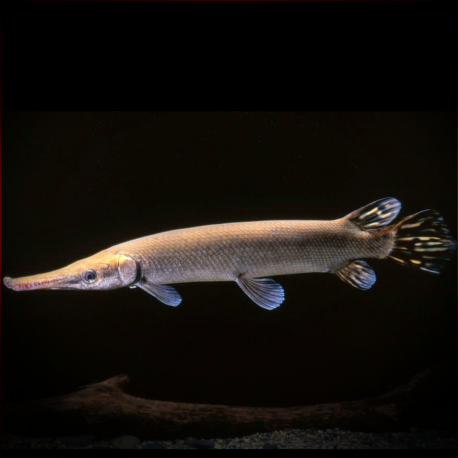More info
Datasheet
| Minimum Tank Size | 10000 litres / 2641.72 US gallons |
| Maximum Size | 180.0cm / 70.87inches |
General Description
The Cuban Gar, scientifically known as Atractosteus tristoechus, is a member of the Lepisosteidae family within the Lepisosteiformes category. This primitive fish species, also referred to as "manjuari" in Cuba, possesses a vascularized swim bladder that enables it to breathe atmospheric air partially. Endemic to Cuba, particularly in western regions of the island and Isla de la Juventud, the Cuban Gar is considered endangered in its native habitat due to various threats.
Aquarium Setup
For housing a Cuban Gar in captivity, a tank size of a minimum of 10000 liters is recommended. The species tends to do well when kept alone or with non-aggressive, similarly-sized fish that it cannot consume. Tank setup requirements are not overly demanding, with an emphasis on maintaining moderate water flow and subdued lighting to mimic its natural habitat preferences.
Behaviour
As an ambush predator, Cuban Gars primarily prey on smaller fish and aquatic crustaceans in the wild. When introduced to captive environments, they may initially be hesitant to accept dead foods but can be gradually transitioned onto meaty frozen options like prawns and lancefish. While small individuals require daily feeding, adults can be sustained with one to two meals per week. In some cases, using live feeder fish may be necessary initially, although this is advised only until the Gar has developed adequate body mass to endure short periods without feeding.
Feeding and Diet
Feeding a Cuban Gar should involve a diet rich in meaty frozen foods such as prawns and whole fishes like trout or sprats. It is crucial to avoid feeding them mammal meat such as beef heart or chicken, as these can lead to excess fat deposition and organ degeneration over time. Feeder fish, if used, should be quarantined for at least two weeks before being offered to the Cuban Gar to prevent disease transmission.
Reproduction & Dimorphism
Information regarding the reproductive habits and potential dimorphism of the Cuban Gar is not detailed in the provided data.
Habitat and Distribution
Cuban Gars inhabit a variety of aquatic environments ranging from large lakes and rivers to sluggish tributaries, backwaters, and pools. While they can survive in both freshwater and brackish water conditions, they exhibit a preference for larger river or swamp systems with extensive floodplains. The species tends to avoid swiftly-flowing water environments, showcasing a versatile distribution across Cuba.

